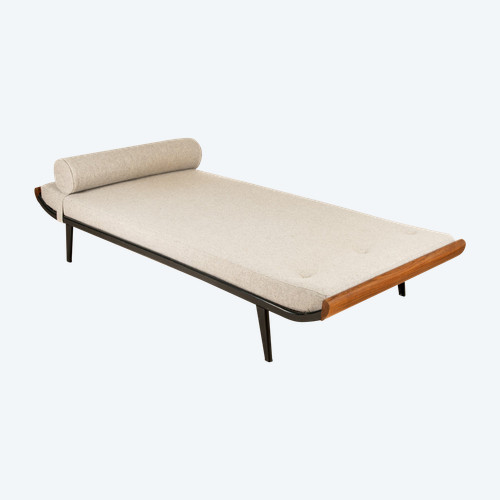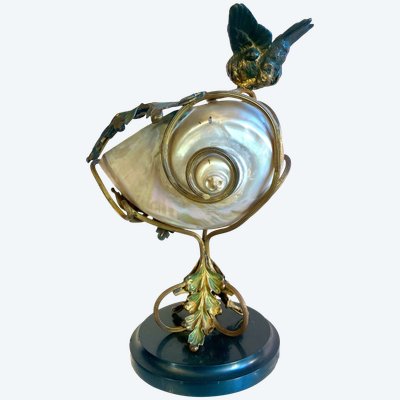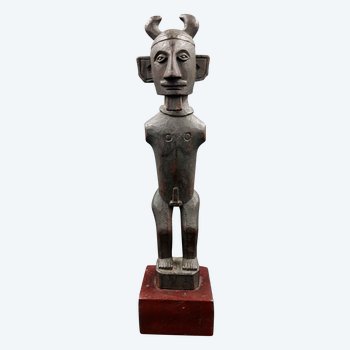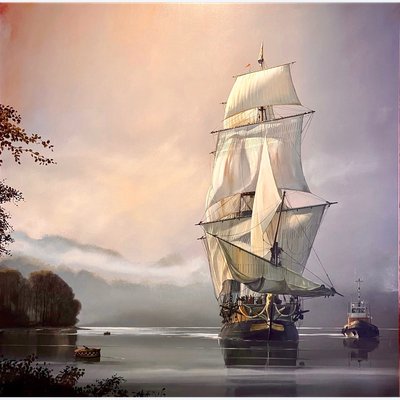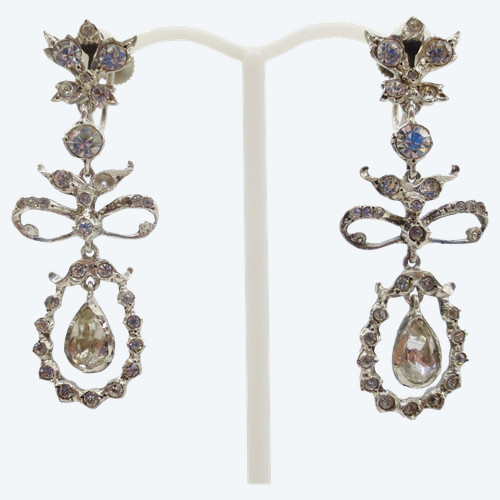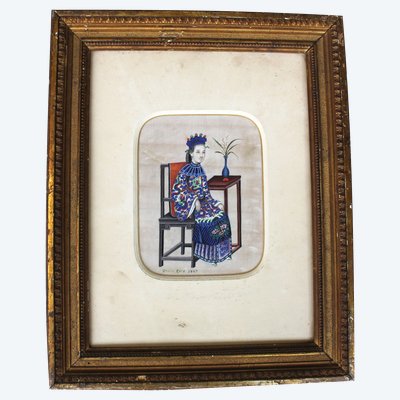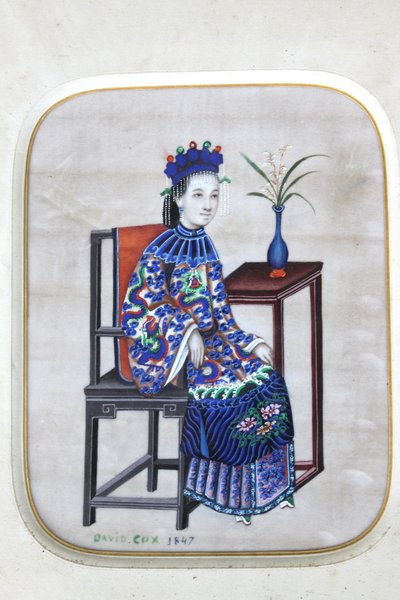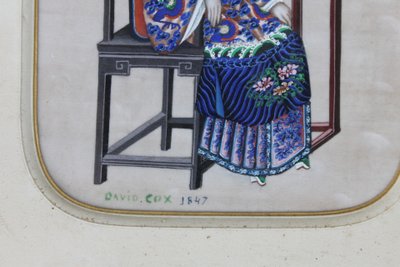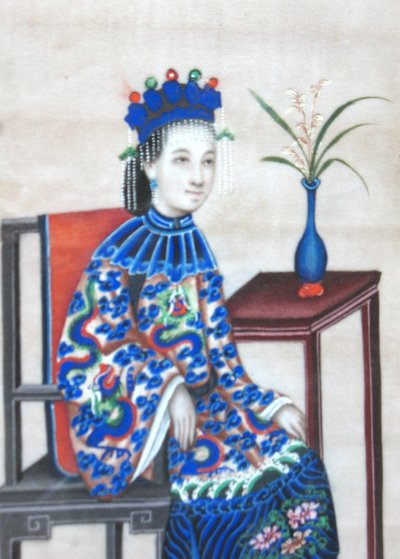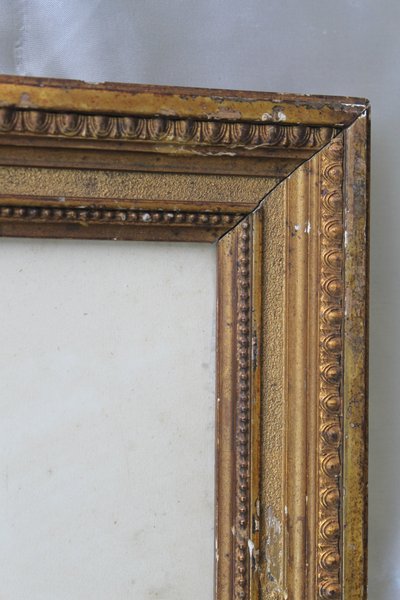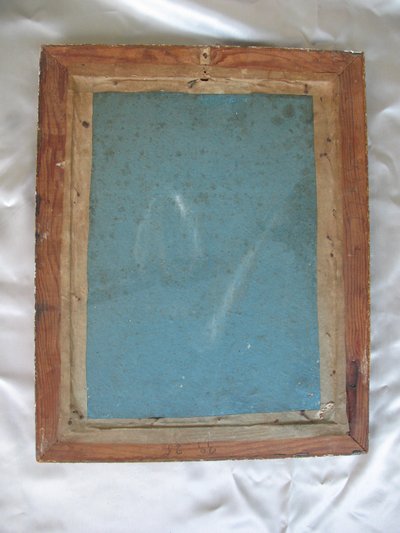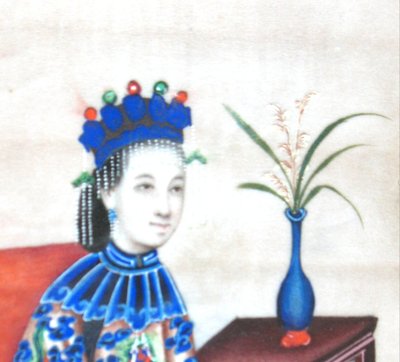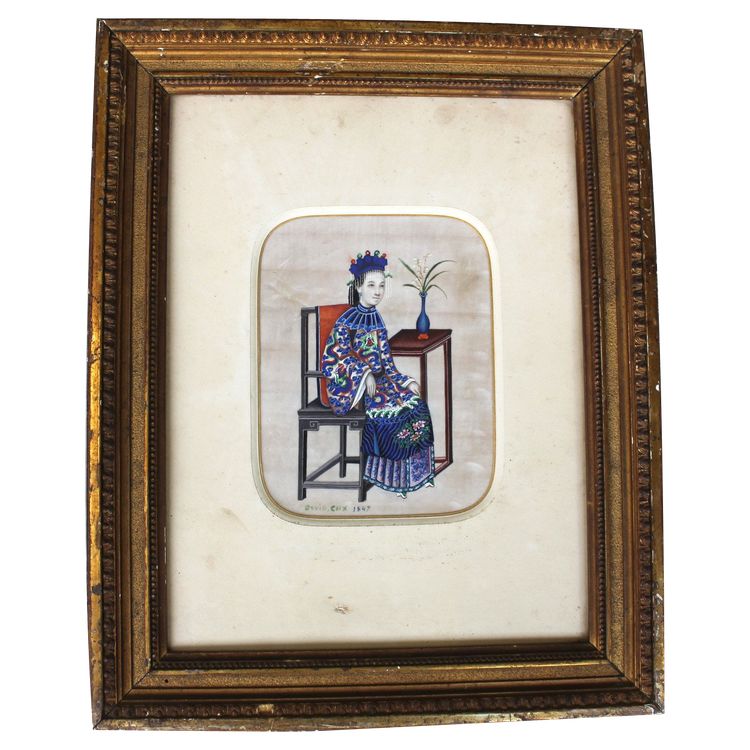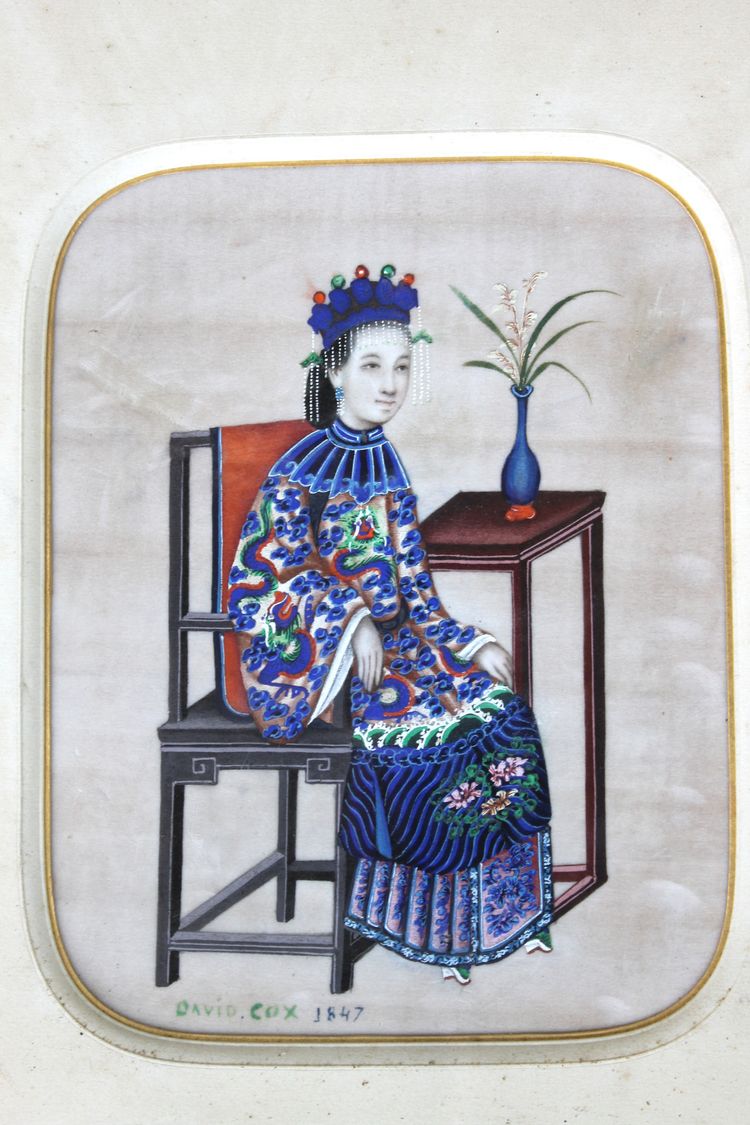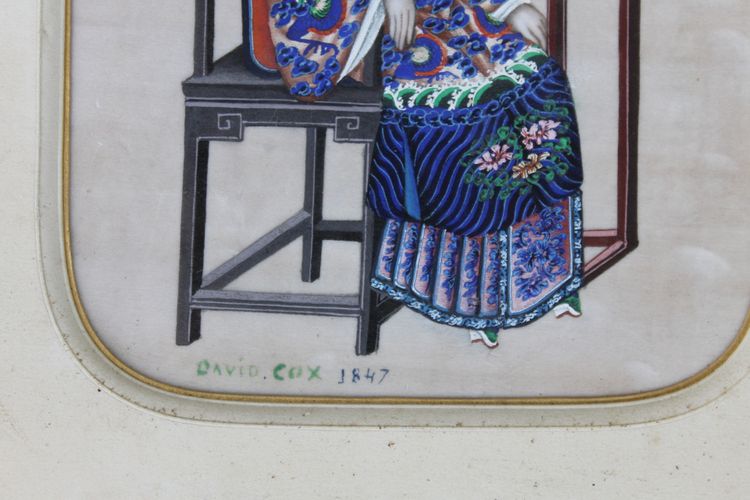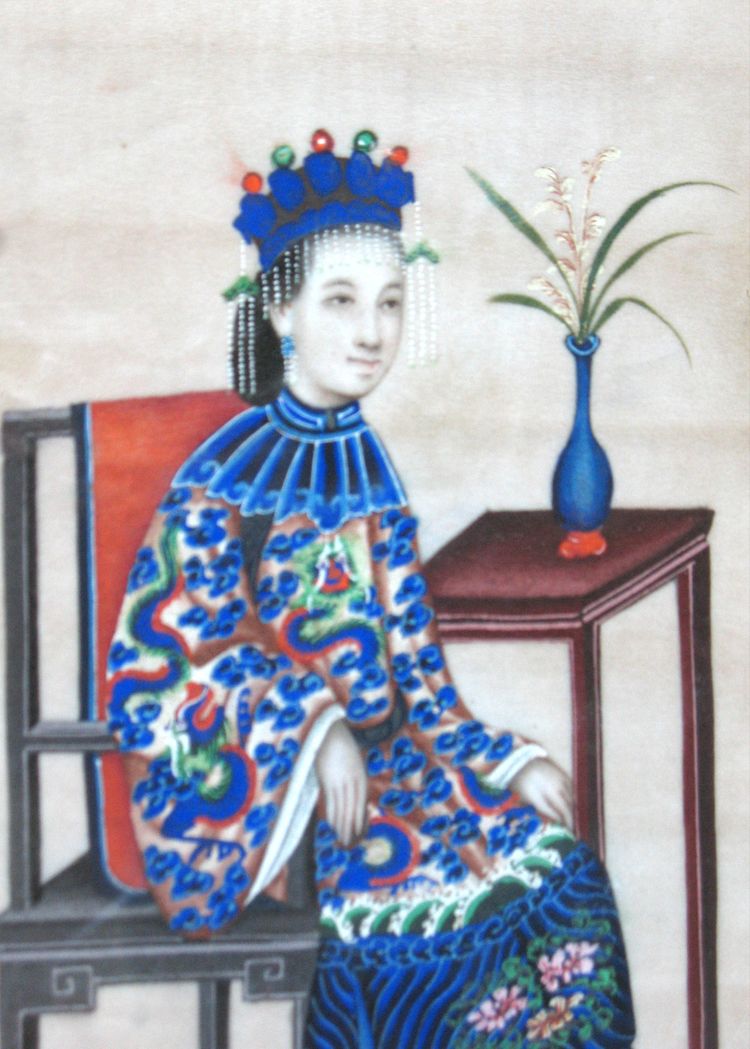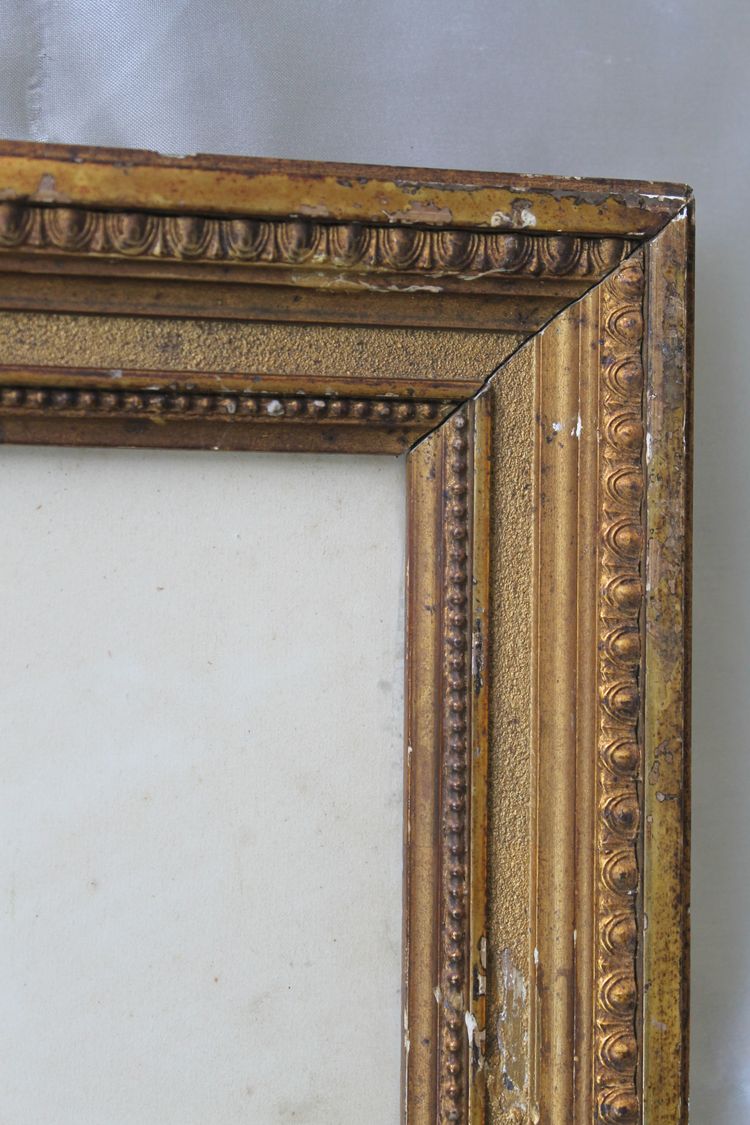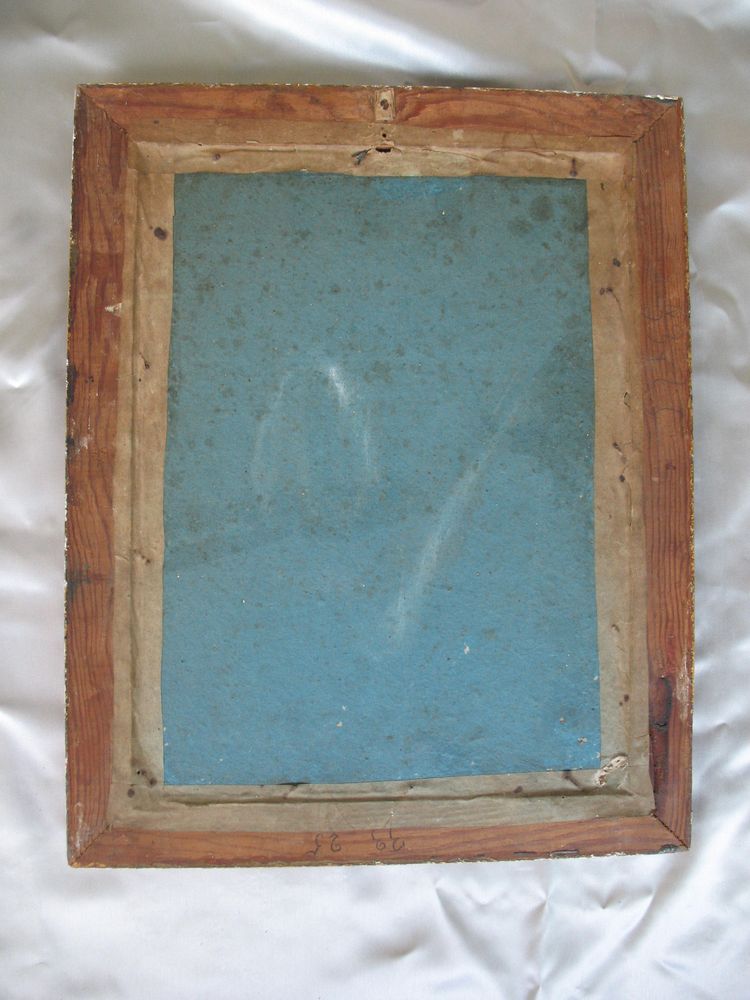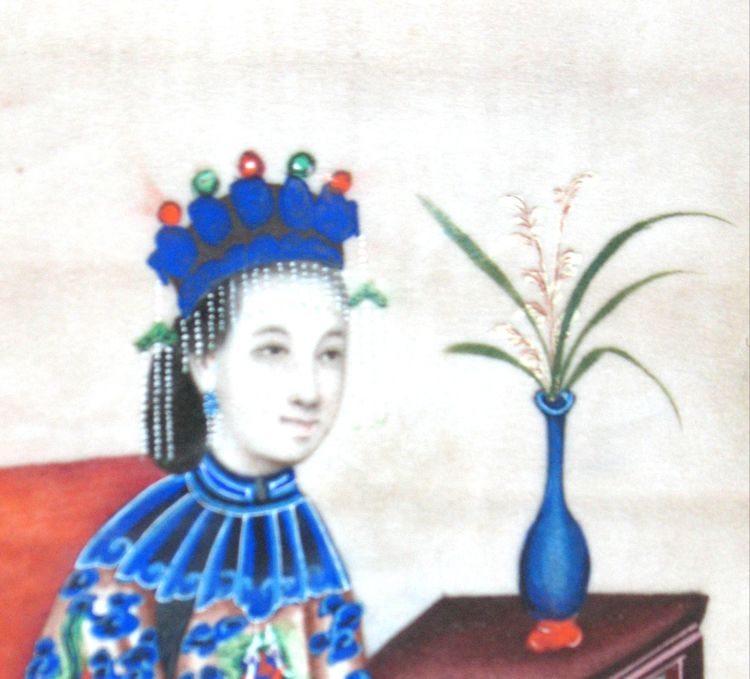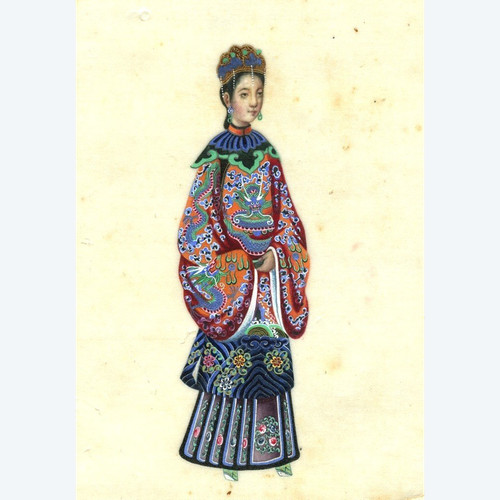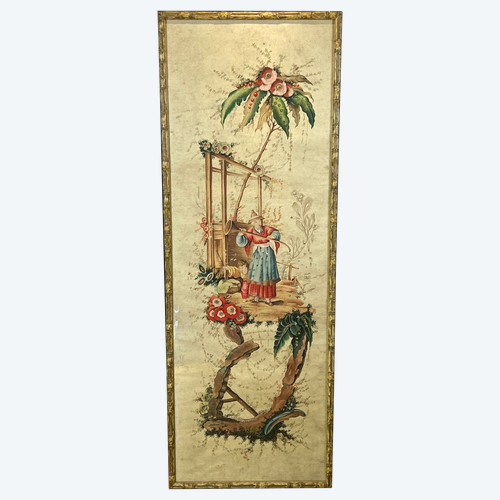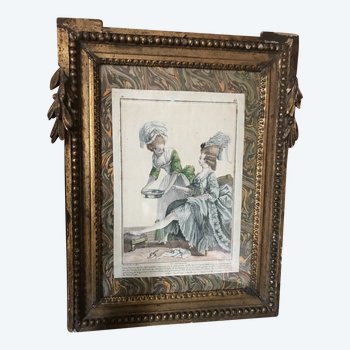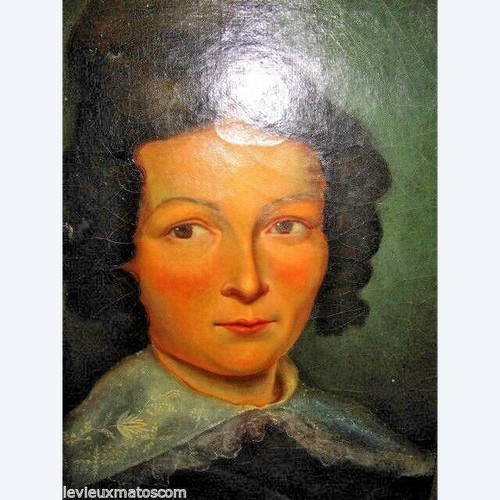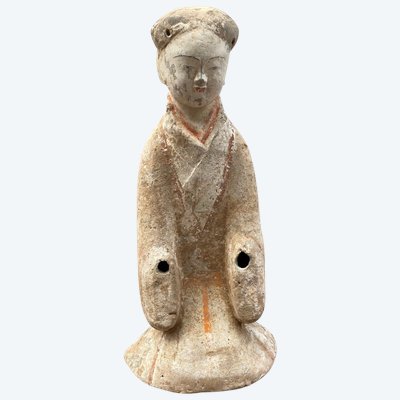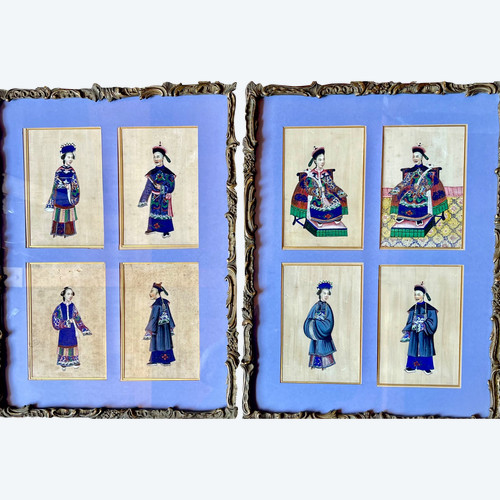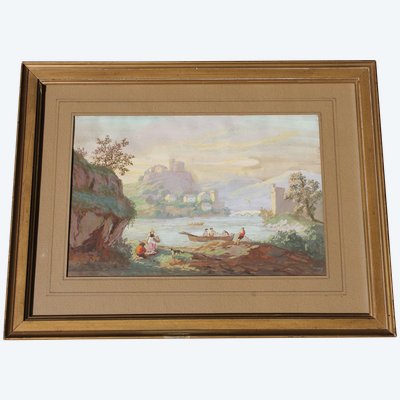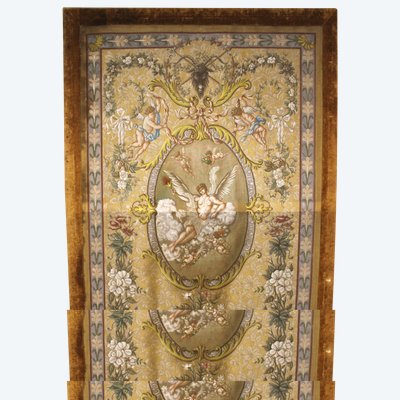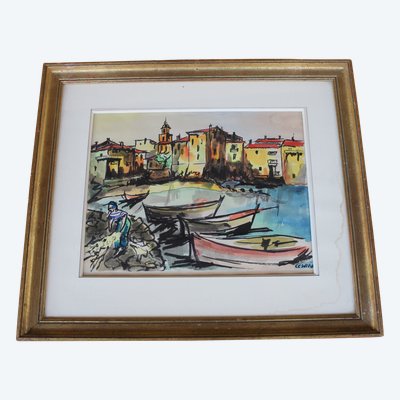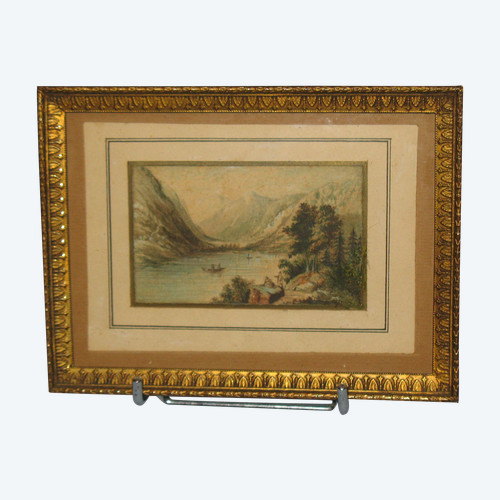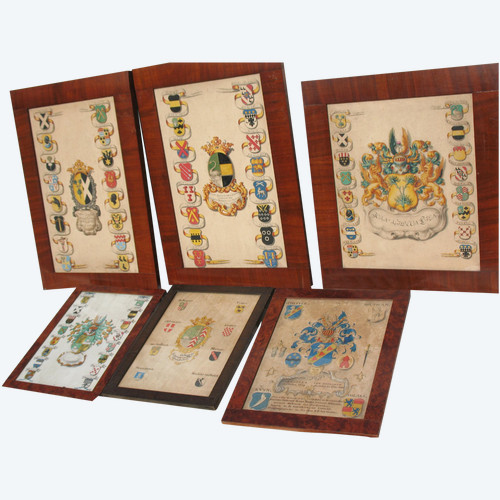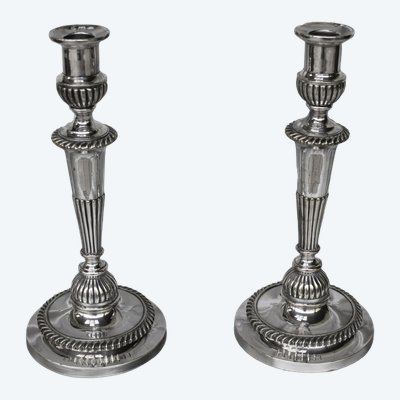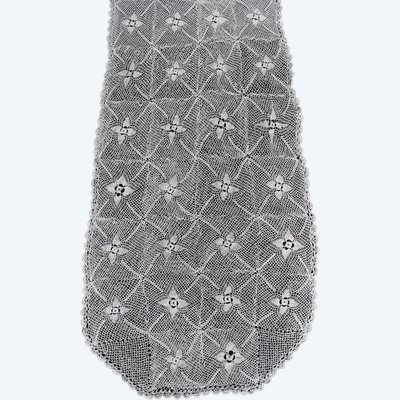This description has been translated and may not be completely accurate. Click here to see the original
Portrait of an elegant Chinese woman, gouache on rice paper, dated and signed David Cox, 1847
Very fine work similar to miniatures
Elegant woman wearing an embroidered silk kimono, seated near a desk
Hairstyle with rows of pearls, done with extreme finesse
Very fresh colors
Work on rice paper in very good condition
Signed and dated lower left
Wooden frame and gilded stucco from the Restoration period with rows of pearls and ovals
Some small losses on the frame
Length: 41.7 cm
Width: 33.5 cm
View: 18 x 14 cm
Biography:
David Cox was born on April 29, 1783, in Birmingham, and died on June 7, 1859, in Birmingham. He was an English landscape painter, one of the most important members of the Birmingham School and a precursor to Impressionism.
He is considered one of the greatest English landscape painters and a major figure in the Golden Age of English watercolor.
Although best known for his watercolors, he also produced over 300 oil paintings and gouaches towards the end of his career and is now considered one of the greatest, but least recognized, of all British painters.
David Cox was born on April 29, 1783, in an industrial suburb of Birmingham. His father, about whom little is known, was a blacksmith who made bayonets and gun barrels for the gun trade. His mother was the daughter of a farmer and miller. His initial destiny was to follow his father into the metal trade and take over his forge, but his lack of physical strength led his family to seek opportunities for him to develop his interest in art, which emerged when he began painting paper kites while recovering from a broken leg.
By the end of the 18th century, Birmingham had developed a network of private academies teaching drawing and painting, to meet the needs of the city's luxury metal goods manufacturers and to perpetuate the Birmingham School's tradition of landscape painting. David enrolled at Joseph Barber's Academy, along with fellow students Charles Barber and the engraver William Radclyffe, both of whom would remain his lifelong friends.
At around 15, he became an apprentice to the Birmingham painter Albert Feidler, who produced miniatures and paintings for the lids of the snuff boxes produced by his workshop. His early biographers mention that he left his apprenticeship after Feidler's suicide. He then obtained work from William Macready the Elder at the Birmingham Theatre, initially as an assistant grinding colors and preparing canvas for the scenery painters, but from 1801 onward, he painted scenery himself, and by 1802 had his own team of assistants.
In 1804, the theatrical impresario Philip Astley promised him work, and he moved to London. He married the daughter of his landlord, Marie Agg, and the couple settled in Dulwich in 1808.
In 1805, he made the first of his many trips to Wales, with Charles Barbier. His earliest watercolors date from this time. Throughout his life, he traveled extensively to the Home Counties, North Wales, Yorkshire, Derbyshire, and Devon, sketching.
He exhibited regularly at the Royal Academy from 1805 onward. He earned his living primarily as a drawing teacher. His first student, the future Earl of Plymouth, hired him in 1808. He subsequently taught several other aristocratic and titled pupils. He wrote several books, including Ackermann's New Drawing Book (1809).
In 1810, he was elected president of the Association of Watercolorists, where he exhibited annually until his death.
His reputation as both a painter and a teacher was established, as evidenced by his election as a Fellow of the Royal Watercolor Society and his inclusion in John Hassell's 1813 book Aqua Pictura. He made his first trip to the continent, to Belgium and the Netherlands, in 1826, and moved to London the following year. He exhibited for the first time at the Royal Society of Artists in Birmingham in 1829, and at the Liverpool Academy in 1831. In 1839, two of his watercolors were purchased at the Old Water Colour Society exhibition by the Marquis of Conynha for Queen Victoria.
It was difficult in London for an artist to be recognized as both a watercolorist and an oil painter.
By the early 1840s, his income from the sale of his watercolors was sufficient to allow him to give up his job as a drawing teacher, and in June 1841, he moved with his wife to Greenfield House in Harborne, a village on the southwest outskirts of Birmingham. It was this approach that allowed him the high levels of freedom and experimentation that would later characterise his work. At Harborne, an immutable routine was established - watercolour and gouache
Ref: AWYMYH719K
 Art Nouveau Mounted Shell, 19th Century
1.200 € EUR
Art Nouveau Mounted Shell, 19th Century
1.200 € EUR

